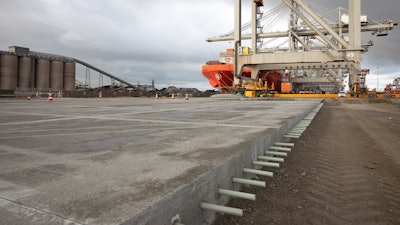Just How Composites are Altering the Landscape of Building And Construction Materials
Just How Composites are Altering the Landscape of Building And Construction Materials
Blog Article
Unlocking the Ecological Benefits of Recycled Compounds in Construction and Layout
In the world of construction and design, the use of recycled compounds holds considerable assurance for boosting sustainability techniques and decreasing environmental influence. The change towards a more sustainable future in these industries pivots on unlocking the complete possibility of recycled composites.

Ecological Impact Decrease
The decrease of environmental effect with the usage of recycled composites in construction and style plays a crucial role in sustainable methods. By incorporating recycled composites into building products, the building and construction industry can dramatically lower its carbon footprint and contribute to a much more eco-friendly future. These lasting products, made from repurposed plastics, wood fibers, or various other recycled elements, supply a viable option to traditional building and construction products without compromising on high quality or toughness.
Recycled composites aid draw away waste from land fills and minimize the demand for drawing out resources, hence saving all-natural sources. In addition, the production procedure of these composites frequently eats less power and produces fewer greenhouse gases compared to producing virgin products (composites). This shift towards using recycled composites not just lessens environmental damage yet additionally promotes a round economy by urging the reuse of materials that would certainly or else be thrown out
Waste Minimization
With a focus on reducing waste in building and construction and layout, the combination of recycled composites supplies a lasting remedy to minimize environmental impact. Waste reduction is a crucial aspect of sustainable practices, and the use of recycled compounds offers a chance to attain this objective efficiently. By using materials that have already served their preliminary purpose, such as recycled plastics or recovered timber fibers, the building and style markets can dramatically decrease the quantity of waste generated and sent out to land fills.
Recycled composites have the prospective to divert significant quantities of waste from conventional disposal approaches, adding to a much more round economy where sources are utilized successfully. Additionally, the manufacturing process of recycled composites typically consumes much less power and generates less discharges contrasted to virgin materials, additionally reducing the ecological footprint of building and style projects.
Implementing waste reduction strategies through the unification of recycled composites not just assists in preserving natural resources yet also promotes an extra sustainable strategy to building and creating for a greener future.
Power Conservation
Incorporating recycled compounds not only lessens waste in construction and layout yet additionally plays an important role in boosting energy preservation techniques within the sector. The usage of recycled composites in construction can considerably add to energy conservation with various means. The production of virgin products commonly calls for considerable power inputs, whereas making use of recycled composites takes in less energy, thereby minimizing general power intake. Additionally, integrating recycled compounds can add to better insulation homes in buildings, decreasing the need for too much heating or cooling, and subsequently decreasing power use for climate control. The light-weight nature of numerous recycled compounds can lead to lighter frameworks, needing much less energy for transport and installment. By promoting the usage of recycled compounds in construction and layout, the industry can make substantial strides towards accomplishing power effectiveness and reducing its carbon impact, ultimately adding to a much more sustainable developed setting.
Carbon Impact Reduction
Enhancing sustainability practices through the usage of recycled compounds in construction and design substantially decreases the carbon footprint of the market. By incorporating recycled materials right into the production of composites, the need for virgin resources decreases, bring about lower power intake and greenhouse gas discharges related to conventional production More Help processes. This reduction in carbon footprint is critical in combating environment change and promoting a more ecologically pleasant strategy to building and layout.
The carbon footprint reduction accomplished via the fostering of recycled composites lines up with the international push towards sustainable practices and the decrease of industrial exhausts. Inevitably, by focusing on the integration of recycled compounds, the sector can make significant strides in lowering its carbon impact and adding to a much more sustainable future.
Sustainable Future
The combination of recycled composites in construction and layout not just addresses prompt ecological worries yet also lays a strong foundation for a lasting future in the sector. By incorporating recycled compounds into official site structure products and items, the construction and style fields can significantly lower their reliance on virgin resources, bring about a much more circular economic climate. This change towards sustainability is essential for minimizing the environmental influence of traditional building methods, which usually result in high degrees of waste generation and resource exhaustion.

Conclusion
To conclude, recycled compounds use significant environmental benefits in building and construction and design by lowering ecological influence, decreasing waste, conserving energy, lowering carbon impact, and promoting a sustainable future. Accepting making use of recycled composites can add to an extra environmentally-friendly method to structure and design, inevitably bring about an extra lasting and greener future for all.
The decrease of environmental influence through the use of recycled composites in building and style plays a vital function in sustainable methods.With an emphasis on minimizing waste in building and design, the integration of recycled compounds provides a lasting option to decrease ecological effect. By advertising the usage of recycled compounds in building and construction and layout, the market can make substantial strides towards accomplishing power efficiency and minimizing its carbon footprint, ultimately adding to a much more sustainable developed setting.

Report this page